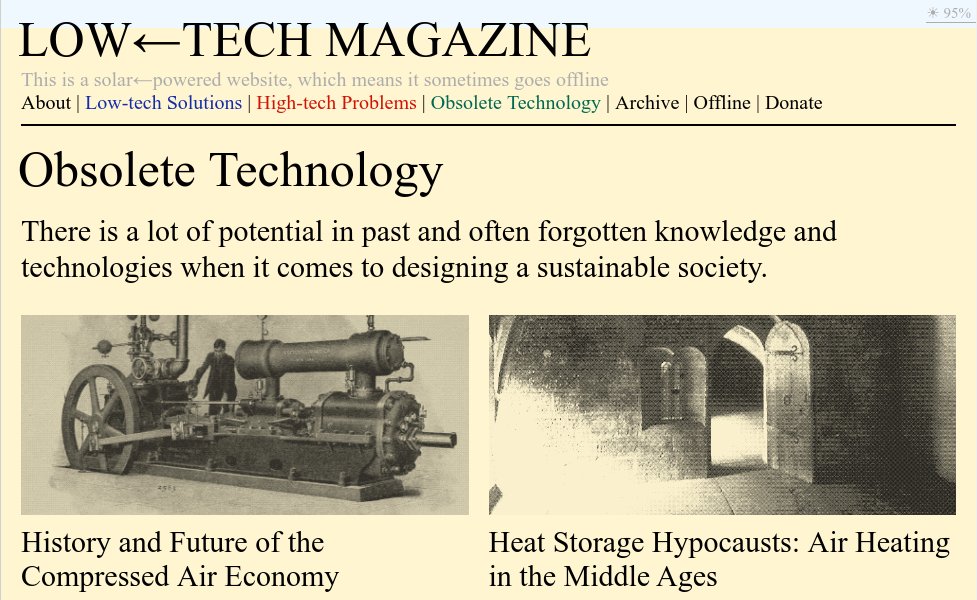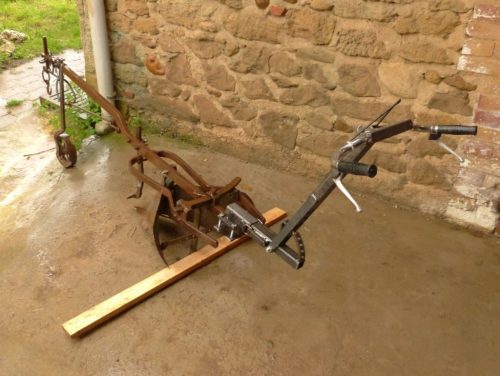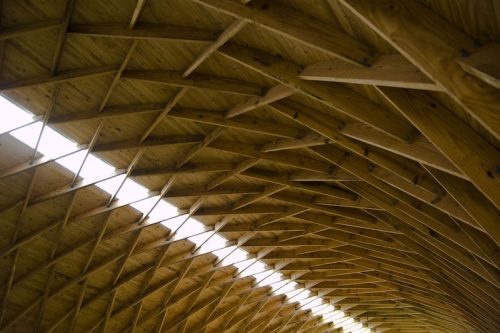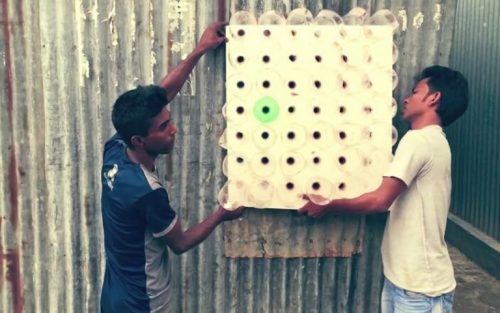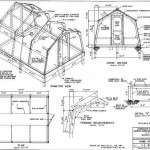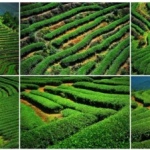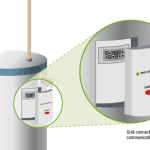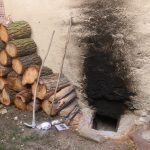For those who want to build their own solar powered website, we have released the source code and a manual outlining all hardware and software details.
Bicycle Powered Thresher
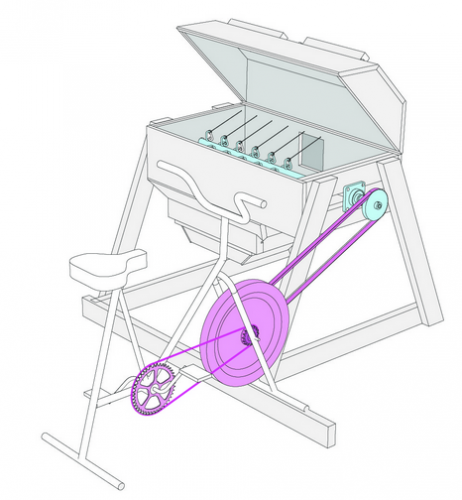 Farmhack has complete instructions for making a bicycle powered thresher. It works on various crops including dry beans, wheat, rice, rye, einkorn, and lupine, and threshes about one pound per minute.
Farmhack has complete instructions for making a bicycle powered thresher. It works on various crops including dry beans, wheat, rice, rye, einkorn, and lupine, and threshes about one pound per minute.
This is the first of three tools for small scale grain processing. The other two tools are the bicycle powered fanning mill and the bicycle powered de-huller/flour mill.
Unlike some “hacks” for small farmers, the Grain Bikes don’t solve an acknowledged problem so much as create new opportunities for small farmers. Dry beans and grains are non-perishable, can be sold, eaten, or planted to avoid seed costs (such as rye for cover crops), and, the labor for processing them can be shunted to the winter when more time is available.
Wind Power System Made from Plastic Buckets
“Vietnamese families living in slums along the Red River in Hanoi are using red plastic buckets and old printers to help light homes, cook meals and slash electricity costs by as much as a third. The recycled goods form the blades and motors of electrical generators that power old motorcycle batteries to illuminate lamps with a brightness equivalent to a 45-Watt light bulb. Though the output generated is small, it makes a significant difference for families previously denied power because they lived too far from a power station or had to ration supply because of the expense.”
More information at Reuters: Plastic buckets, broken printers shine light on Hanoi’s poor. Via Playground Magazine.
See all our low-tech windmill posts.
Adapted Tools for Organic Farming
L’Atelier Paysan is a French-speaking collective of small-scale farmers, employees and agricultural development organisations who design open source farm tools.
Based on the principle that farmers are themselves innovators, they have been collaboratively developing methods and practices to reclaim farming skills and achieve self-sufficiency in relation to the tools and machinery used in organic farming.
They have an English language website, which includes about a dozen tool descriptions with technical drawings. All tools can be appropriated and modified by farmers. [Read more…]
Lamella Roofs
A lamella roof, also known as the “Zollinger roof” (after Friedrich Zollinger), is a vaulted roof made up of simple, single prefabricated standard segments (mostly in timber) as a way to span large spaces. The individual pieces are joined together with bolts and/or plates to form a rhomboid pattern. Wooden sheathing covers the structure on the outside. The lamella roof was patented in 1910 and became popular between the World Wars, especially in Germany when metal for construction was in short supply. Some of these structures are now almost 100 years old and many of them remain in very good condition.
Read more: Lamella Roof, Open Source Ecology.
Zero Electricity Air Cooler
Over 70% of Bangladesh’s population live in corrugated tin huts across the countryside. During the long summer months, temperatures reach up to 45° Celsius, making these huts unbearable to live in.
To address the issue, Grey Dhaka teamed up with volunteers from Grameen Intel Social Business Ltd to create the Eco-Cooler – a zero electricity air cooler, which uses re-purposed plastic bottles cut in half and put into a grid, in accordance to available window sizes.
Based on wind direction and airflow pressure, the Eco-Cooler has succeeded in decreasing the temperature in tin huts by up to 5° Celsius. After initial tests, blueprints of the Eco-Cooler were put up online for everyone to download for free.
Thanks to Adriana Parra.
